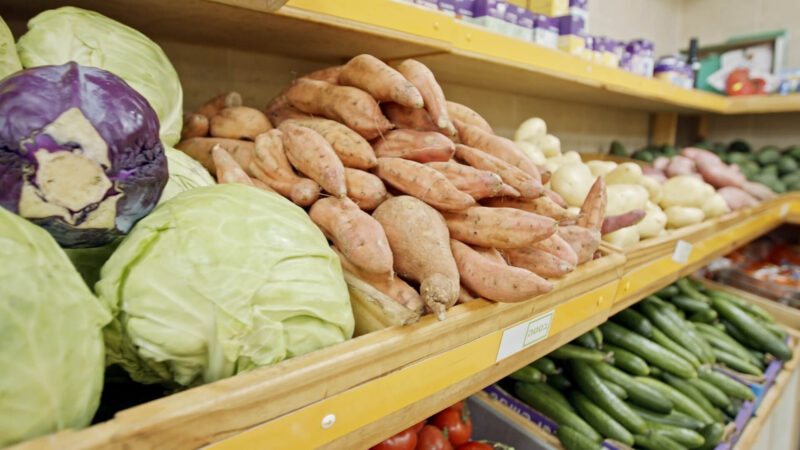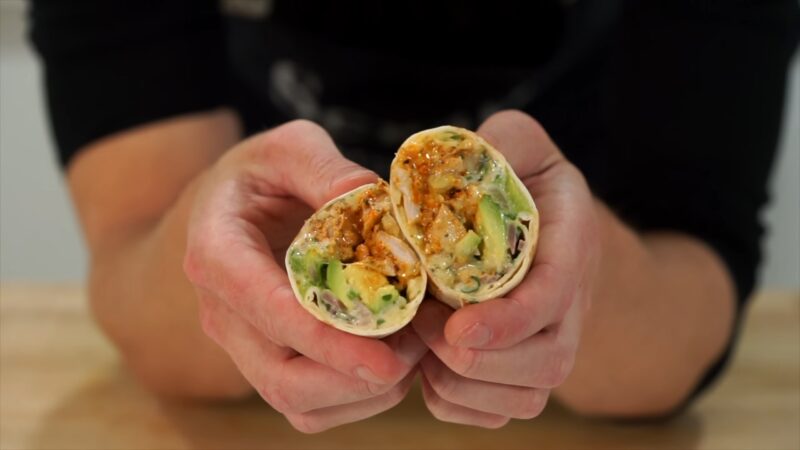Have you tried organizing your weekly meals? It is not nearly as hard as it may sound to some.
All you need is discipline. It goes without saying you know what you will eat the next week, right?
Let me show you how I do my weekly plans.
Day-by-Day Meal Guide
My day-by-day meal guide is quite detailed. For each day of the week, I plan which meals I’ll have for breakfast, lunch, dinner, and snacks.
- I start my mornings with something light like a smoothie or yogurt with granola, followed by more substantial meals as the day progresses.
- For lunch and dinner, I mix and match the ingredients I’ve prepared.
- One day might be a wrap using the pre-cooked chicken and fresh veggies, and another day could be a hearty bowl with quinoa, salmon, and steamed greens.
The beauty of this system is the flexibility it offers—allowing me to adapt meals based on my daily needs and preferences.
Planning and Shopping

In weekly meal prep, planning is key. First, I sit down with a notebook or a meal-planning app and sketch out the meals I want to make for the week.
This includes breakfasts, lunches, dinners, and even snacks. Planning ensures a balanced diet throughout the week while focusing on organic ingredients.
Next, I create a shopping list based on the meals I’ve planned. Of course, this means looking for the ingredients I don’t have in my garden.
The list roughly looks like this:
- For proteins, I usually look for organic chicken, salmon, or plant-based alternatives like tofu.
- In the grains section, I add items like quinoa, brown rice, and whole wheat pasta.
- As for vegetables, I focus on a variety of colors and types, such as spinach, carrots, and bell peppers.
I also include a checklist in my planner to ensure I don’t forget any staples.
When shopping, I make it a point to select the freshest produce and the best cuts of meat by checking for vibrant colors and firm textures in vegetables and opting for well-marbled, fresh-smelling meats.
Basic Preparations
The core of my meal prepping involves preparing basic ingredients that can be utilized in multiple dishes. I start by cooking staple grains.
Quinoa and brown rice are my go-to because they’re versatile and packed with nutrients.
I typically cook a large batch using my rice cooker or on the stovetop, which I then cool and store for use throughout the week. For proteins, I like to prepare chicken breasts and salmon.
I usually bake or grill them simply with a bit of olive oil, salt, and pepper. This way, they can be easily added to different recipes during the week without clashing flavors. Washing and chopping vegetables is also a big part of my preparation.
I make sure all my veggies are ready to be thrown into any meal on the fly, which saves a lot of time. Some of my favorite recipes for these basic preparations come from Brian Lagerstrom’s blog, including his Simple Roasted Chicken and Oven-Baked Salmon.
Also, I pre-cook vegetables like broccoli, carrots, and sweet potatoes, which are fantastic for quick additions to meals or snacks.
Assembling the Meals
Assembling meals is where creativity comes into play. With all my ingredients prepped, I can easily put together nutritious and varied meals. I focus on combining different flavors and textures to keep my diet interesting.
For example, I might use pre-cooked chicken and fresh vegetables to make Chicken Avocado Ranch Naan Wraps.
Ingredients
- 1/4 cup Sprouts Brand Organic Ranch Dressing (plus more for drizzling)
- 2 cups cooked shredded chicken (Sprouts)
- 4 pieces naan bread
- 2 cups baby arugula
- 2 tomatoes, cut into wedges
- 2 avocados, sliced

Instructions
- Lay the naan bread pieces on a flat surface.
- Spread about 1 tbsp of Ranch Dressing along the center of each naan bread.
- Place about 1/2 cup of baby arugula on top of the dressing.
- Layer the cooked shredded chicken next.
- Follow with tomato wedges and avocado slices.
- Drizzle a little bit of the Ranch Dressing on top.
- For a nicer presentation, you can tie a small length of string around each wrap.
Another favorite is the Sheet Pan Teriyaki Ginger Sesame Chicken & Broccoli, which is easy to assemble and cooks in no time.
Ingredients
- 2 lbs boneless, skinless chicken breast, cut into pieces
- 8 oz broccoli florets
- 1 yellow bell pepper, chopped
- 1 red bell pepper, chopped
- 1 and ½ tbsp sesame seeds
- For the Marinade:
- ½ cup teriyaki sauce
- 3 tbsp oil
- 3 tbsp honey
- 1 tbsp ground ginger
- 2 tsp garlic powder
- 1 tsp red pepper flakes
- Salt/pepper to taste

Instructions
- Heat your oven to 350 degrees F.
- Mix Marinade:
- In a small bowl, mix the teriyaki sauce, oil, honey, ginger, garlic powder, red pepper flakes, and salt/pepper according to your taste.
- Whisk until all the ingredients are well combined.
- Marinate Ingredients:
- Place the chicken, broccoli, and bell peppers in a large bowl.
- Pour HALF of the prepared marinade over these ingredients, saving the remainder for later use.
- Toss everything together until the marinade evenly coats all pieces.
- Allow the mixture to marinate for about 10 minutes.
- Bake:
- Lay the chicken and vegetables out on a baking sheet coated with cooking spray.
- Bake in the preheated oven for 20-25 minutes, stirring halfway through to ensure even cooking.
- Continue baking until the vegetables are soft and the chicken is fully cooked.
- Final Touches:
- Once out of the oven, drizzle the remaining marinade over the chicken and vegetables.
- Sprinkle sesame seeds on top.
- Serve as is or over a bed of rice or quinoa.
I’m also fond of combinations, like a Kimchi Rice Bowl, both of which utilize ingredients from my prep like brown rice and fresh veggies.
Ingredients
- 1 cup of cooked brown rice
- ¼ cup of kimchi, heaped
- 1 Persian cucumber, cut into ribbons
- ½ cup of red cabbage, thinly sliced
- ½ an avocado, sliced
- 8 ounces of marinated tempeh, either baked or grilled
- Half of the peanut sauce recipe
- ½ teaspoon of sesame seeds
- 2 Thai chiles, thinly sliced (optional)
- Lime slices, for serving
- Microgreens, optional for garnish

Preparation Steps
- Begin by placing the cooked brown rice at the base of the bowl.
- Layer the kimchi, cucumber ribbons, sliced red cabbage, and avocado slices on top.
- Position the marinated tempeh atop the vegetable layers.
- Liberally drizzle the peanut sauce over everything.
- Sprinkle with sesame seeds and, if desired, Thai chiles. Accompany with slices of lime on the side.
- If you like, add microgreens for an extra garnish.
These dishes ensure that I’m not only eating healthily but also enjoying what I eat.
Storage and Preservation
Storing meals properly is crucial to maintaining their freshness. I use glass containers as they don’t hold onto odors and are easy to clean. Each container is used to store different components separately when possible.
For instance, I keep grains, proteins, and vegetables in different containers, which allows me to mix and match them later. I also make sure that everything is cooled before it goes into the fridge. This prevents moisture build-up, which can lead to spoilage.
Labeling containers with the date of preparation helps me keep track of what should be eaten first, ensuring nothing goes to waste.
Hey there, I’m Marwa Mcintyre. My life’s all about getting hands-on with the earth, championing the cause of growing things the organic way, and sharing what I’ve learned over the years. What is my aim, you ask? To make our planet a bit greener, one garden at a time

